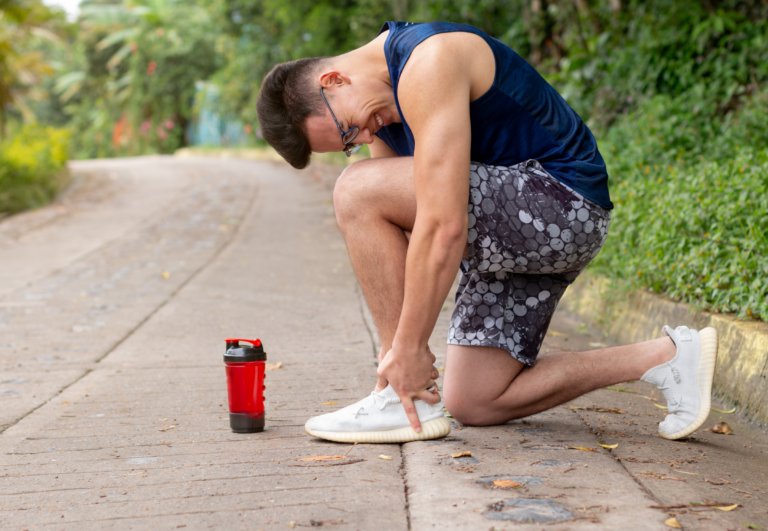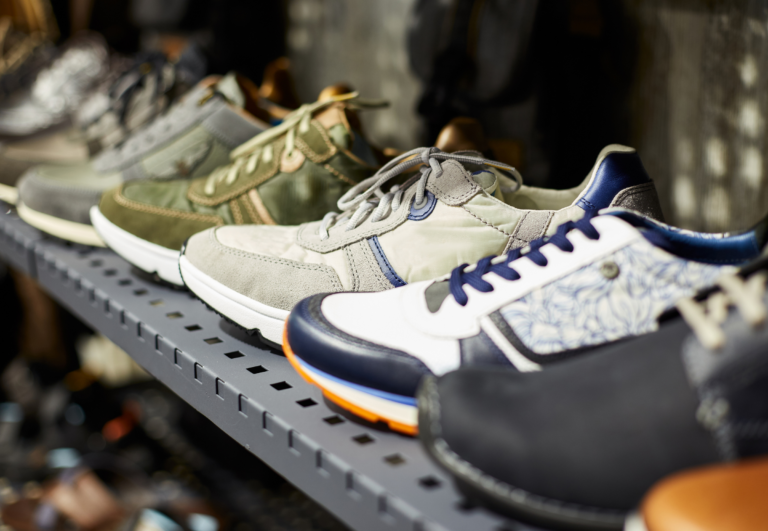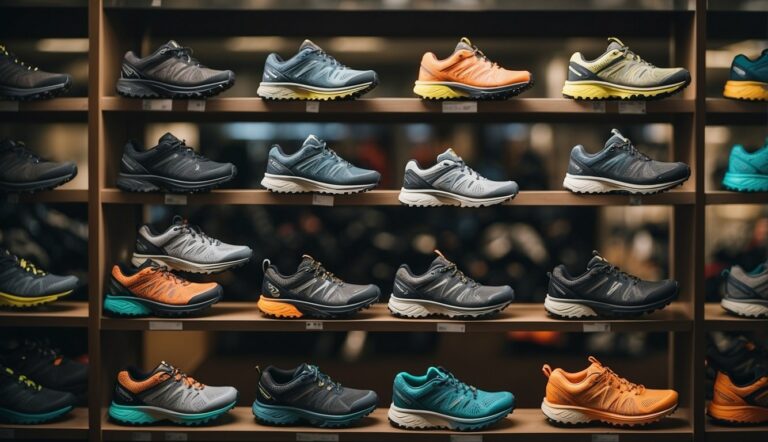Are There Trail Shoes for Overpronators? Find Your Perfect Fit for the Trails
If you’re an overpronator—one whose feet roll excessively inward upon landing—you know that finding the right trail shoe isn’t just a matter of comfort, but a necessity for proper support and injury prevention. It’s important to choose a shoe specifically designed to stabilize and support your unique foot mechanics.
Yes, there are trail running shoes designed specifically for overpronators which incorporate stability features to help control this excessive pronation. For example, the Altra Lone Peak is quite stable due to its wide “Foot Shape” platform, which can be beneficial for overpronators. Additionally, stability running shoes like the Arahi 6 Stability Running Sneaker and Provision 6 Running Shoe for Stability are designed to provide support and correct overpronation.
Brands like Saucony and ASICS also offer overpronation trail running shoes that come with features like medial posts or dual-density foams to provide the necessary support for overpronators.
Let’s dive into the details!
The Best Trail Shoes for Overpronators
When tackling the trails, having the right footwear is critical for overpronators. In this section, you’ll discover specific trail shoes designed to provide the right blend of support, cushioning, and durability.
Top Trail Running Shoe Picks for Overpronators
When considering the top trail running shoe picks for overpronators, it’s important to look for models that offer a combination of support, stability, and protection.
Here are a few options that are often recommended for overpronators:
- Saucony Peregrine – Saucony offers a range of trail running shoes that are suitable for overpronators, with stability features built into a rugged, trail-ready design.
- HOKA ONE ONE Arahi 6 – Known for their cushioning, HOKA’s Arahi model provides a stable ride with a lower heel-toe drop, which can be beneficial for overpronators looking for a combination of support and plush cushioning.
- Altra Provision 6 – Altra’s Provision series offers stability with a unique foot-shaped toe box and zero-drop platform, which encourages a more natural foot position and gait.
- ASICS GEL-Kayano – Although not specifically listed in the search results for trail shoes, the GEL-Kayano line is well-known for its stability features, which could make it a good option for overpronators who also run on mixed surfaces.
- Inov-8 TrailFly G 270 – Inov-8 shoes are praised for their grip and durability on trails, and the TrailFly G 270 is suggested for those requiring a balance of protection and stability.
- Brooks Adrenaline ASR or Brooks Cascadia with GuideRails – Brooks is known for its GuideRails technology, which acts like bumpers on a bowling alley to keep your feet in check without being overly intrusive. The Adrenaline ASR is a trail-adapted version of their popular Adrenaline road shoe, while the Cascadia is a well-regarded trail shoe that offers a balance of cushioning and support.
- Salomon XA Pro 3D – This shoe is designed for stability and durability on technical trails. The 3D Advanced Chassis between the outsole and midsole maximizes security, motion control, and energy management for a stable, efficient ride.
- New Balance Fresh Foam Hierro – While not traditionally categorized as a stability shoe, some versions of the Hierro have been noted for their supportive fit, which might make them suitable for overpronators who don’t require aggressive stability features.
- La Sportiva Bushido II – With a focus on stability and traction, the Bushido II is designed for technical terrain. It’s a responsive shoe that offers a secure fit, making it a potential option for overpronators who need a stable platform on uneven trails.
- Nike Air Zoom Terra Kiger – Nike’s Terra Kiger offers a responsive ride with a heel Zoom Air unit. While it’s not marketed as a stability shoe, its design provides a secure fit and a rock plate for protection, which may offer enough support for some overpronators.
When choosing trail shoes, it’s essential for overpronators to consider their individual needs, including the severity of their overpronation, the type of trails they’ll be running on, and their personal preference for cushioning and shoe fit. Trying on several models and brands, ideally at a specialty running store, can help ensure the best fit and support.
Key Features to Look For
- Cushioning and Shock Absorption: For comfort that lasts, your trail shoes should offer ample cushioning. Look for technologies like Fresh Foam by New Balance or ASICS’s Gel-Kayano which deliver targeted shock absorption.
- Support and Stability: Motion control and stability are vital as they reduce excessive inward rolling of the foot. Shoes with features like medial posts, J-Frame™ from Hoka One One, or dual-density foams are beneficial.
- Durability and Grip: Your shoes must withstand rough terrain. Durable construction, alongside a rugged outsole with good grip, will help you navigate through uneven trails and slippery sections.
- Breathability: To keep your feet cool, opt for materials that offer breathability without compromising on protection from trail debris.
- Comfort and Fit: Ensure the shoe fits well with the right amount of arch support to avoid any discomfort while running.
Trail Running and Overpronation – What To Look For!

In trail running, where the running surface can be uneven and unpredictable, it’s even more important for overpronators to find shoes that provide the right support and stability.
Trail shoes for overpronators are designed with specific features to help mitigate the effects of overpronation.
These can include:
- Medial Post: Some trail shoes will have a firmer material on the inner side of the midsole, known as a medial post, which helps to resist the inward rolling of the foot.
- Dual-Density Foam: This involves a firmer foam along the medial side or the midfoot of the shoe to provide additional support where it’s needed.
- Guidance Systems: Certain shoe models include a guidance system, like ASICS’ Trusstic System or Saucony’s GuideRails, which helps to steer the foot into a more neutral alignment.
- Reinforced Heel Counter: A robust heel counter helps to lock the foot in place and provides a stable base from which the foot can push off, reducing the chance of the ankle turning inwards.
- Supportive Upper: The upper part of the shoe can also play a role in stability, with structured designs that hug the midfoot and help to keep the foot aligned over the platform of the shoe.
For overpronators, it’s crucial to choose a trail shoe that not only deals with the pronation issue but also has other trail-specific features like:
- Outsoles with Aggressive Traction: To handle the varied and often slippery terrain of trails.
- Durable Construction: To withstand the wear and tear of running on rough trails.
- Protective Features: Such as toe guards and rock plates to protect the feet from obstacles and uneven surfaces.
When selecting trail shoes, it’s advisable for overpronators to visit a specialty running store where they can get a gait analysis. This analysis can help determine the level of pronation and guide the runner to the best shoe options for their specific needs. It’s also important to try on different pairs and brands, as the fit and feel can vary significantly.
Defining Overpronation
Overpronation occurs when your foot rolls inward excessively as you move, causing your arch to flatten more than it should. This movement can impact how the rest of your leg aligns and moves, including your knee and hip. It’s a common issue that affects your overall stability and balance.
The Importance of Proper Support
Proper support in a trail shoe is crucial for overpronators. Trail shoes designed for overpronation typically offer robust ankle support and a structured design to prevent excessive inward movement, or pronation, of your feet.
This specialized support helps to maintain the alignment of your feet, ankles, and knees, preserving the natural movement and preventing injury.
Recognizing Signs of Overpronation in Your Footfall
You may notice signs of overpronation if the insides of your shoes wear out more quickly than the rest or if you experience consistent pain in your feet, ankles, or knees during or after running. If you’re spotting these indicators, it’s worth considering a trail shoe designed for this very condition.
Maintaining the health of your feet is a journey, and on the rugged paths where you tread, the right shoes are your best companions. Trail running shoes for overpronators exist, and they’re built to let you hit the ground running, with the assurance that every step you take is supported for your specific footfall needs.

Alternatives to Stability Trail Shoes for Overpronators
If you’re dealing with overpronation, where your foot rolls inward excessively during movement, causing potential stress on the ankle, knee, and hip, you might wonder about options beyond specialized stability trail shoes. Worry not, as there are friendly and accessible alternatives that can offer the support your feet need.
Insoles: Custom orthotic insoles can be a lifesaver. These are designed to provide the arch support that might be lacking in neutral shoes. They also help to correct foot alignment, reducing the inward rolling motion of your feet.
| Type | Benefits |
|---|---|
| Custom Orthotics | Tailored to your feet for precision support and alignment |
| Pre-made Supportive Insoles | Cost-effective and widely available for improved arch support |
Footwear Adjustment Tips:
- Lacing Techniques: Altering how you lace your shoes can enhance ankle support and reduce movement that leads to overpronation.
- Socks with Arch Support: Some socks offer extra arch support, acting as an additional layer of stability.
Remember, the goal is to find a comfortable solution that complements your foot structure and your love for the trails. Listen to your feet and choose what helps you enjoy your runs without discomfort.

Additional Considerations for Trail-Running Footwear
When searching for trail shoes, especially if you’re contending with overpronation, it’s essential to weigh the benefits of waterproofing against breathability, and to understand the best practices for shoe maintenance and care to ensure longevity and performance.
When to Choose Waterproof Over Breathable
Choosing between waterproof and breathable trail shoes hinges on your typical running conditions.
If you regularly hit trails in wet climates or across streams, waterproof footwear is indispensable. Brands often use materials like GORE-TEX® to keep water out while aiming to retain some breathability. Conversely, if you’re mostly running in dry, warm conditions, a breathable upper is key to preventing overheating and discomfort. This is especially critical for runners with flat feet who might experience more heat build-up inside the shoe.
- For Wet and Cold Climates: Go waterproof to keep your feet dry and warm.
- For Dry and Warm Climates: Choose breathability to enhance airflow and reduce in-shoe moisture.
Trail Shoe Maintenance and Care
Taking care of your trail shoes is crucial for performance and durability. After each run, remove any debris and mud to prevent material breakdown. If your trail shoes are wet, let them dry naturally away from direct heat sources. A simple but effective regimen includes:
- Cleaning: Gently brush off dirt and air out the shoes.
- Drying: Stuff with newspaper to absorb moisture and retain shape.
- Storage: Keep them in a cool, ventilated space to prevent material degradation.
Moreover, be mindful of your shoe’s lifespan. Even the best care won’t make shoes last forever. Regularly check for wear and consult with a podiatrist if you notice uneven tread wear, which could indicate issues with your gait.
Stay within your budget but invest in quality shoes that support your specific needs; this is a pivotal move for trail runners, particularly when you have specific conditions like overpronation to manage.






